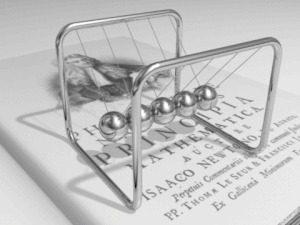Should you be using language like that on the forum?
Apologies if emf means something other than electromagnetic field or electromotive force. I've only lived in the US for 27 years, I still haven't figured out the language differences
Should you be using language like that on the forum?
But, why does the electron move at all since the current is reversing direction 60 times a second?
Some of those cheap chargers could be fire hazards. I would be very careful if they did not come with the original equipment.
... in a copper wire of cross-section 0.5 mm2, carrying a current of 5 A, the drift velocity of the electrons is on the order of a millimetre per second...
That's 3.6 m/hr or 14 in/hr.
But let's go back to just the simple DC current for now, to consider the explanation to our layman how his lamp turns on immediately.
His lamp turns on instantly because the electron's electric field propagates through the wire at a significant fraction of the speed of light. It causes the electrons in the filament in the lightbulb to instantly move in response.
It is similar to what happens on the water when a boat passes by 100 feet away from your boat. If you were to dye a section of the water near the boat and watch it, you would see that the water actually doesn't move very far and yet a few seconds later the water near you moves and your boat moves. Since it takes energy to move your boat, that energy has been transmitted by the wave moving in the water, just like the energy is transmitted by the electric field moving in the wire. The water molecules are like the electrons. They both just slosh around a bit and don't really move very far very fast.
...electric field propagates through the wire at a significant fraction of the speed of light...
Some of those cheap chargers could be fire hazards. I would be very careful if they did not come with the original equipment.
Gotta be more careful with decimal points.Talk about inflation! Back when I was a kid, 3.6m/hr equaled 142 in/hr!
The electron motion down the wire is started by the electric field propagation in the dielectric material surrounding the wire. The speed of propagation depends on the dielectric constant of the material and is usually a large fraction of the speed of light in vacuum as you noted.
I cannot honestly say that some chargers are dangerous but have read a bit about unfortunate events.I get them at resale shops... most branded for whatever device they were designed for... toys, blackberry's, intercoms and all kinds of phones... Just counted my "supply"... actually over 100 chargers/power supplies... am the go to guy in the neighborhood when someone needs an extra plug in or car lighter adapter or laptop and printer cords.
One of my hobbies buying old electronics of all kinds... just to see how they work... six big plastic tubs full. Never pay more than $2.... My toys. Vic20, Adam, TRS80, Apple IIe, Sinclair, Emachine(s) etc...

Here is a little tidbit. Did you know that electrons in a wire only move about 3 inches an hour? Talk about slow!

Re: electron flow... I had it explained to me, that the electrons don't actually move on a wire, but rather are absorbed by the atoms that constitute the transmission medium (in this case wire)... and thereafter being thrown off to the next atom, and so on down the line...
True.
But how do you explain in simple terms to a layman ....
Harder to explain to a layman is an electric field propagating in a vacuum. Actually that is hard to explain to a EE student.

When you're looking at costs and savings, the next kWh you save is more expensive than the average. Say my average is a dime, I use 15 cents when I calculate the cost of running an additional fan, for instance.




I have it but got distracted. Probably by NW-boundTo understand better EM propagation, especially in a vacuum (where there is no obvious medium like the water in the hose example), try Richard Feynman's book, "QED, The Strange Theory of Matter and Light".
I haven't read it in a long time. I should reread it. It is like $11 on Amazon.
